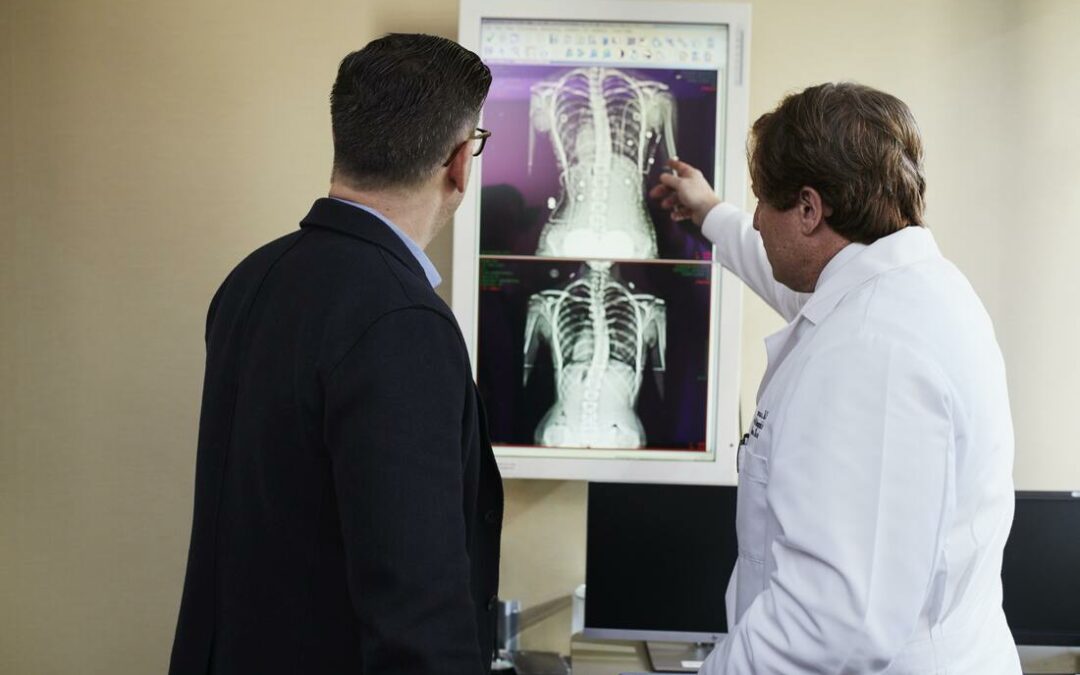Scoliosis affects between 6 and 9 million people in the United States. While scoliosis occurs equally among males and females, it mostly affects young people. A vast majority of patients are teenagers. However, people in their 40s, 50s, and 60s can also develop scoliosis.
While most scoliosis cases are mild, if not treated in time, they can become dangerous. Today, we’re going to discuss adult scoliosis and learn:
- What exactly is late-life scoliosis
- How does it develop later in life
- What you need to do to treat it properly
What is Adult Scoliosis?
Back pain is one of the most common problems. As a matter of fact, most people will experience back problems at some point in their lives. Scoliosis, however, is not your ordinary back problem. It’s usually defined as a sideways curvature of the spine. Common types of scoliosis include:
- Congenital scoliosis
- Early-onset scoliosis
- Degenerative scoliosis
- Adolescent idiopathic scoliosis
- Neuromuscular scoliosis
- Scheuermann’s kyphosis
- Syndromic scoliosis
As we said in the opening paragraph, children mostly suffer from scoliosis but adults are far from immune from it. Research shows that on average, an adult scoliosis patient is around 57 years old.
And what’s the leading cause of scoliosis in adults? Unfortunately, despite the research done, no one knows for sure. A huge number of cases, for both younger and older patients, are idiopathic. That means, the doctors don’t know what caused it.
How Does It Occur In Adulthood?
As you age, your body becomes more vulnerable and injury-prone. That’s why most adult scoliosis cases are caused by wear-and-tear, which occurs naturally. For example, most people develop arthritis within the actual joints of their spine as they get to old age.
Besides aging, injuries are also a common cause of adult scoliosis. Although some cases are hereditary, most of them result from back trauma. Accidents happen all the time, both at work and at home. A simple back injury can turn into stenosis if you hurt the wrong nerve.
How can you tell if you’re suffering from adult scoliosis? You can’t know for sure without an MRI, however, you can keep an eye for some early signs. These include lingering leg pain, which comes from pinched nerves. Low-back pain is also common, but that can just be a sign of old age.
5 Ways to Handle Adult Scoliosis
When talking about treatments, most patients have two options: surgical and non-surgical treatment. Fortunately, only a fraction of sufferers ever need surgery. Here are five different ways you can treat adult scoliosis. Only one of them involves a trip to the operating room.
1. Physical Therapy
The most widely-used non-surgical treatment method is the Schroth Method. The method works for children and adults alike. It aims to help the patient elongate the spine, put it back in place, and keep it stable. This physical therapy method customizes the exercises for every patient in an effort to return the spine in its natural position. The method can help patients improve their posture, lessen their pain, and even breathe easier.
2. Chiropractic Therapy
Mild cases of scoliosis can be treated with the help of a chiropractor. The catch is, you need to visit a chiropractor with experience in scoliosis treatment. A traditional chiropractic approach can potentially do more damage than good by irritating the nerves surrounding the spine. This can actually make your case worse over time. Chiropractic treatment of scoliosis involves special exercises, stretches, and massage techniques that can adjust the spine and put it back in place.
3. Scoliosis Bracing
More often than not, a simple orthopedic brace is all you need to treat a back problem. Even one as serious as scoliosis. Braces vary in how pressure is applied to prevent the spinal curve from progressing any further. In most cases, the patient needs to wear the brace for 8 or so hours during the night. But if the case is more serious, the patient might be required to get a full-time brace. For instance, when the patient has a double curve, they might be required to wear the brace for 23 hours every day.
4. Posture Therapy
You can treat scoliosis with just a few lifestyle changes if you discover it in time. Bad posture can actually cause a serious case of scoliosis, especially if you’re an adult. With so much sitting around nowadays, keeping a good posture at all times is almost impossible. But you still need to be careful if you don’t want to end up with a bad case of scoliosis. Throughout the day, be mindful of your posture. Make sure to sit straight and keep your head over the shoulders.
5. Surgical Treatment
Possibly the most common surgical treatment for scoliosis is the spinal fusion in which the doctor fuses the spine to bone grafts. These grafts are specifically designed to keep the spine straight. Nonetheless, there are other medical procedures, including decompression, stabilization, and column resection. The last one is the most serious. During a column resection, the doctor removes entire sections of the patient’s vertebrae. But the procedure is only used for serious spinal deformities.
Get Scoliosis Treatment Now
You should approach scoliosis seriously, no matter how old you are. Even though adult scoliosis can be dangerous, recent medical advancements have made treatment less intrusive and recovery time much shorter. Here are a couple of things to keep in mind:
- Although rare, scoliosis occurs in adults and can cause serious complications
- Scoliosis can cause chronic back and leg pain that can last for years
- A combination of bracing and physical therapy is most often the solution
That’s what you need to know about adult scoliosis. If you want to know more about scoliosis prevention methods and treatments, get in contact with our Wisconsin office right away.




